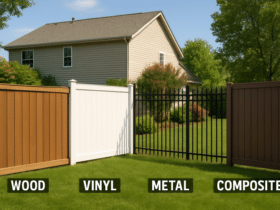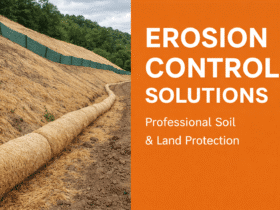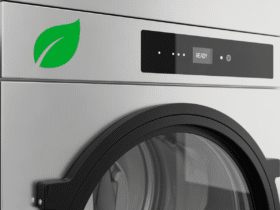Table of Contents
- Introduction
- The Immediate Need for Restoration
- Mitigating Water Damage
- Understanding Mold Removal Techniques
- Fire Restoration – A Complex Task
- Preventative Measures to Secure Properties
- Technology’s Role in Modern Restoration
- The Economics of Restoration Services
- Consulting with Experts
Introduction
When disaster suddenly strikes, it’s easy for property owners to feel overwhelmed and helpless as they survey the ensuing damage. Whether facing the aftermath of a flood, fire, or mold infestation, potential devastation can escalate rapidly unless addressed promptly and correctly. In such times, engaging renowned restoration experts in Northeast Georgia becomes critical. These specialized services are designed to safeguard your property from further damage and restore it to its original state.
The importance of swift intervention cannot be overstated. The right restoration approach curtails damage, preserves structural integrity, and guards against health hazards. Instead of letting feelings of distress prevail, property owners can depend on professional restoration to transform chaos into order, saving time and resources.
The Immediate Need for Restoration
After a disaster, every moment counts. Whether water, fire, or mold damage, the window of opportunity for effective intervention narrows quickly. Acting swiftly after the incident helps prevent permanent property degradation and minimizes the scope of work required. The longer a building is exposed to damaging elements, the more costly and complex the restoration process becomes.
Water and fire, in particular, create unique challenges that demand prompt attention. Water can infiltrate materials deeply, leading to hidden pockets of moisture that compromise structural integrity. In the case of fire, smoke and soot residues settle into surfaces and ductwork, causing discoloration, lingering odors, and acidic corrosion. If left untreated, these conditions not only degrade the aesthetics and usability of a space but also present health hazards to occupants.
Therefore, enlisting a skilled restoration team immediately following an incident is not a luxury—it’s a necessity. These professionals assess the extent of damage, deploy the right equipment, and implement tailored solutions to mitigate long-term risks. Their timely response ensures quicker recovery and protection against secondary issues, such as mold or rot, safeguarding property value and occupant well-being.
Mitigating Water Damage
Water damage can strike without warning and escalate rapidly. The sources are numerous and often unpredictable, from storm surges and overflowing appliances to burst pipes and leaky roofs. The impact, however, is consistently destructive—warped wood, stained walls, saturated insulation, and weakened foundations. Standing water and excess moisture are breeding grounds for harmful microbes, so early detection and removal are critical. As highlighted in a recent EIN Presswire article, identifying the source of water damage is the essential first step in any effective mitigation effort.
Professional water damage mitigation starts with a thorough assessment to identify visible and hidden damage. Industrial pumps and dehumidifiers are then employed to extract water efficiently and dry the environment completely. What separates professionals is their ability to locate moisture trapped behind walls or under flooring using moisture meters and thermal imaging—areas a layperson could easily overlook.
Beyond just cleanup, the mitigation process includes sanitization to prevent microbial growth and repair work to restore the property. This multi-pronged approach ensures that problems don’t resurface weeks or months later. Engaging experts early helps restore physical structures and reduces financial stress in the long term, as the cost of immediate mitigation is significantly lower than that of future remediation.
Understanding Mold Removal Techniques
Mold thrives in dark, damp spaces, often unnoticed until it becomes a serious problem. It damages surfaces, compromises building materials, and presents serious health hazards, especially for individuals with allergies or respiratory issues. Once mold takes hold, it spreads quickly through airborne spores, making swift action crucial to containment and removal. Restoration professionals begin with a comprehensive inspection to determine the full scope of mold infiltration. They identify visible and hidden colonies using moisture detection tools and air quality monitors. Containment protocols, often involving negative air machines and sealed work zones, are established to prevent cross-contamination during cleanup. For homeowners tackling mold themselves, the U.S. Environmental Protection Agency offers detailed guidance on safe and effective procedures.
Depending on the severity of the infestation, different removal methods are used. Non-porous surfaces can be cleaned with antimicrobial solutions, while severely affected materials, such as drywall or carpeting, are often removed and replaced. The goal is not just to eradicate existing mold but to correct the conditions that allowed it to flourish in the first place, ensuring a healthier indoor environment and preventing future outbreaks.
Fire Restoration – A Complex Task
Fire damage involves more than the immediate destruction caused by flames. It encompasses the lingering effects of smoke, soot, and water used to extinguish the blaze. Each element affects property differently, requiring a diverse range of restoration strategies. A thorough evaluation by specialists is the first step toward formulating an effective recovery plan.
A structural assessment is crucial to determining a building’s safety and stability after a fire. Restoration teams reinforce compromised areas and begin salvaging what can be repaired. Although less visible than charred wood or furniture, smoke damage can be more pervasive, as it embeds itself in porous materials and HVAC systems. Specialized deodorizing treatments, such as ozone and thermal fogging, neutralize persistent odors.
Soot presents another major challenge. Its acidic nature can corrode metals, discolor surfaces, and ruin electronics if not promptly and properly removed. Restoration experts use HEPA vacuums, chemical sponges, and safe cleaning agents to eliminate soot residues. Fire restoration is a highly detailed process that requires cleaning up, rebuilding, and preventing future issues—a blend of craftsmanship and scientific precision to return the property to a livable condition.
Preventative Measures to Secure Properties
Prevention is the most effective form of restoration. While post-disaster recovery is crucial, taking proactive steps to safeguard a property can dramatically reduce the risk of damage in the first place. Routine inspections of plumbing, roofing, and electrical systems help detect early warning signs before they escalate into full-blown emergencies.
For instance, checking and replacing old or corroded pipes can prevent water leaks or bursts. Regular inspection of electrical systems can identify fire risks such as overloaded circuits or frayed wiring. Ensuring drainage systems function properly can prevent basement flooding or structural erosion. Each is a critical tort of a long-term maintenance strategy that shields properties from avoidable harm.
Integrating preventive technology like leak sensors, intelligent thermostats, and fire detectors boosts readiness even more. These systems can notify homeowners of problems instantly, enabling quick action and reducing damage. Allocating time and resources to prevention saves money over time and guarantees that properties stay secure, robust, and prepared to face future challenges.
Technology’s Role in Modern Restoration
Currently, the technology significantly contributes to optimizing and improving restoration initiatives. Tools like thermal imaging cameras empower restoration specialists to locate hidden moisture, which might otherwise go unnoticed until it causes structural damage or mold growth. These non-invasive tools enable early detection, saving time and money in the long run by targeting specific areas for intervention.
In addition to detection tools, advanced drying systems, such as desiccant dehumidifiers and air movers, are revolutionizing moisture removal. These machines work faster and more efficiently than traditional methods, reducing downtime and allowing property owners to return to normalcy more quickly. Their effectiveness also minimizes the chance of secondary damage, such as warping wood or bacterial growth, which could complicate and extend the restoration timeline.
Furthermore, digital platforms and software now assist with project management, helping teams track progress, document damage, and communicate with clients and insurers in real time. This level of coordination reduces errors and increases transparency, resulting in smoother experiences for all parties involved. Overall, integrating modern technology into restoration ensures that responses are faster, more accurate, and ultimately more cost-effective.
The Economics of Restoration Services
Although some might hesitate about the expenses of restoration services, it is crucial to reflect on the wider financial consequences of doing nothing. What appears to be a minor leak or discoloration can quickly develop into a major issue that requires significant structural repair. By investing in immediate professional intervention, property owners mitigate the risk of higher costs down the road and avoid prolonged disruptions to their daily lives or business operations.
Untreated water damage, for example, can lead to severe foundational issues or rot, compromising the entire building’s integrity. Similarly, mold growth can require whole sections of drywall, flooring, or cabinetry to be replaced if not addressed promptly. These replacements are often far more expensive than early-stage remediation and come with additional hidden costs, such as temporary relocation or health-related expenses if the indoor air quality becomes hazardous.
Restoration services, therefore, should be seen not as a burdensome expense but as a strategic investment. The value lies in preserving property value, protecting occupant health, and reducing liability risks. Over time, proactive restoration can save thousands of dollars while maintaining the safety and functionality of residential and commercial spaces.
Consulting with Experts
Dealing with the consequences of property damage can be daunting. However, skilled experts provide essential knowledge and reassurance.
Restoration experts conduct thorough evaluations to determine the full scope of damage, often identifying issues that untrained eyes might miss. Their knowledge allows them to develop targeted solutions that ensure no part of the damage is left unaddressed, reducing the likelihood of future complications.
Beyond assessment, these professionals bring efficiency and coordination to the restoration process. They manage the logistics of repairs, work with insurance providers, and ensure compliance with local regulations and building codes. This all-encompassing method alleviates the strain on property owners, allowing them to focus on other priorities while ensuring their property is well cared for.
Moreover, staying informed about current safety standards and best practices is essential for property owners who want to be prepared for future vulnerabilities. Restoration experts often educate clients about maintenance strategies and preventive measures that can safeguard properties from repeat incidents. With proper guidance, owners recover from current damage and build resilience against future threats.










